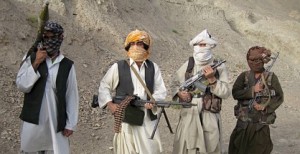Fighting in Afghanistan is largely seasonal. As winter nears, soldiers return to their lands and herds. Fighting is light; bombings continue in cities and along convoy routes. With warmer weather, Taliban fighters assemble and conduct operations directed by regional and local commanders, all of whom answer to shura councils in Pakistan, though of course unified authority is in doubt now after the death of Mullah Omar.
This year, the fighting season has brought an increase in Taliban operations in the north – a region where support for the southern Pashtun movement has not been high. Nonetheless, Taliban forces have been able to coalesce, without detection, and strike in districts heretofore relatively unaffected by the war. Ominously, at least one sizable government outpost surrendered without a fight. Regardless of the Taliban’s present leadership struggle, they have been able to launch a sustained, well-designed offensive in the north. To what purpose?
Limited opportunities in the south
A plausible explanation is that the Taliban see fewer opportunities in the south. Over the years, the Taliban conquered areas and bargained with a number of Pashtun tribes to support them, but the last two years of fighting brought no major gains. Army positions indeed fell, but were retaken, typically in a few days and after punishing US airstrikes. Many Pashtun tribes in the south are adamantly opposed to the Taliban. Some, hostile to the Kabul government and the Taliban alike, have formed their own militias to fight both sides.
The Taliban may see the north as offering more promise. There, surrounded by suspicious if not hostile northerners (Tajiks, Hazaras, Turkmen, and Uzbeks), dwell many Pashtuns who have not endured war in recent years and who, owing to ethnic loyalty or assessment of who’s winning, are willing to align with the Taliban. With victories in the north, the Taliban can raise flagging spirits, regain momentum, and perhaps win support from at least some non-Pashtuns who are discontented with Kabul.
Isolating the capital
Greater presence in the north affords the opportunity for a second front that could detach Kabul from much of the country. Recruitment in the north may build a force of several thousand fighters which, in conjunction with fighters already to the south and west of Kabul, will isolate the capital, and eventually besiege it. The Afghan army may have to shift troops to the north, which will present opportunities to the Taliban in the south.
Laying siege to Kabul will be difficult, though. The Taliban will have to reorganize from small, elusive guerrilla bands to large, more or less conventional units. Quick hit and run tactics will have to give way to disciplined infantry movements. Artillery and logistics will be crucial. Government positions will have to be taken then held. The Taliban have been attacking in larger formations, both in the north and south, and the attacks on outposts are conventional in nature. However, there are no signs of the necessary logistical system and artillery. Further, troops concentrations around Kabul will be vulnerable to US airpower. Nonetheless, Taliban commanders, like those elsewhere, are capable of overconfidence – and egregious miscalculation.
Interdiction of supplies
Just as the Taliban will need reliable supplies to lay siege to Kabul, the Afghan government and remaining US troops also need regular supplies. There are presently two routes connecting Afghanistan with the American logistical system: one stretches from the Baltic through Russia and Uzbekistan, the other from Karachi on the Pakistani coast. Greater presence in the north will allow the Taliban to harass and perhaps intermittently close the northern route. Owing to the proximity of the Pakistani and Afghan Taliban, the southern route is ever subject to interdiction. A concerted effort in the north and south could present serious supply problems for the US and Kabul.
Pakistani generals, who see the Taliban as allies against Indian power in the region, periodically close the southern route. Putin’s ambitions in Eastern Europe and increasing hostility to the US may lead to a closing of the northern route one day. It may be noted parenthetically that an opening between the US and Iran may provide a third supply route that could be the most reliable.
Staking out territory
Negotiations are underway to end the ruinous war. Kabul is incapable of defeating the Taliban and is willing to accept Taliban authority over considerable parts of the country. The Taliban will govern swathes of the south and smaller parts of the north. The ongoing offensive may ultimately seek to establish Taliban control over several northern districts and their resources, especially the oil fields being developed by the Chinese.
A settlement would place sizable oil revenues in the hands of Taliban governors. This will be a problematic inversion of the more desirable outcome of the Kabul government in control of national resources, disbursing the income, rentier-state style, to local tribes and peoples, and holding together an otherwise fissiparous country. This arrangements would replicate periods of harmony and prosperity, when Kabul disbursed money from Britain or Russia.
Unfortunately, Taliban control of northern oilfields may begin to replicate the circumstances after the Soviet withdrawal when local warlords seized gem mines and other economic assets and brought about the fragmentation of Afghanistan from which it has never recovered
©2015 Brian M Downing
